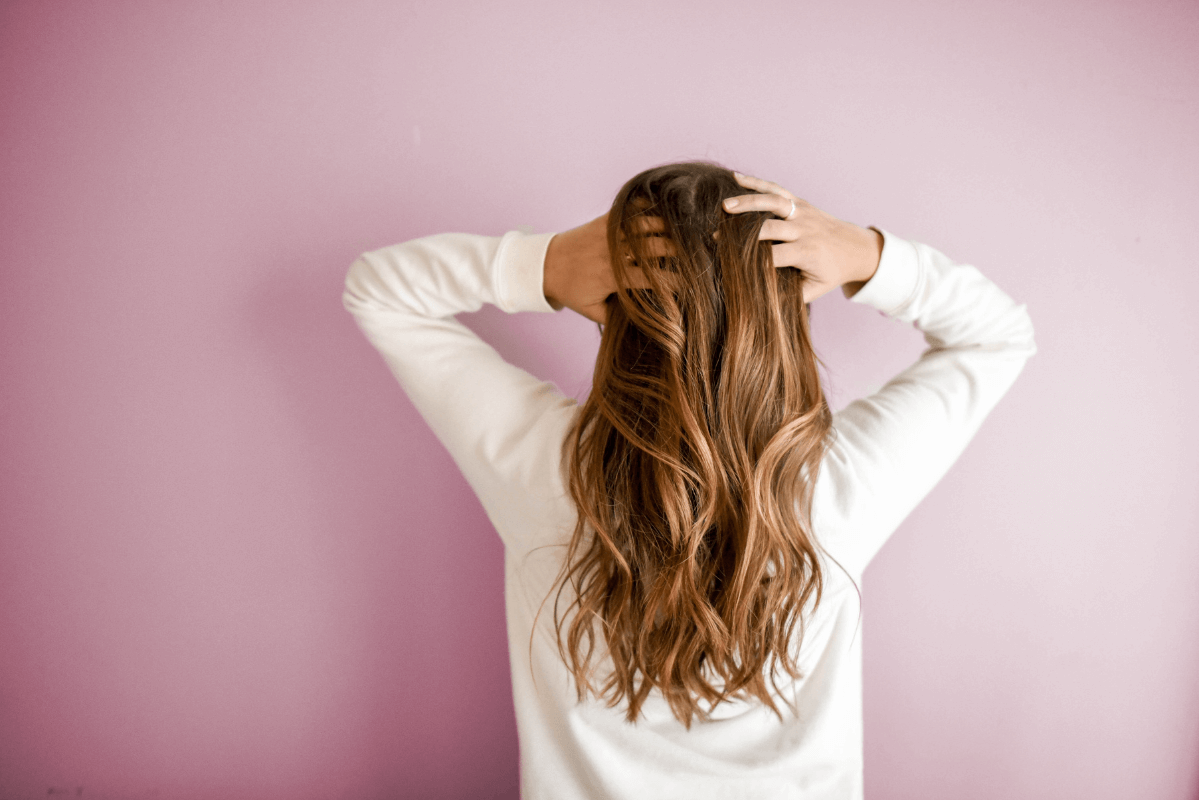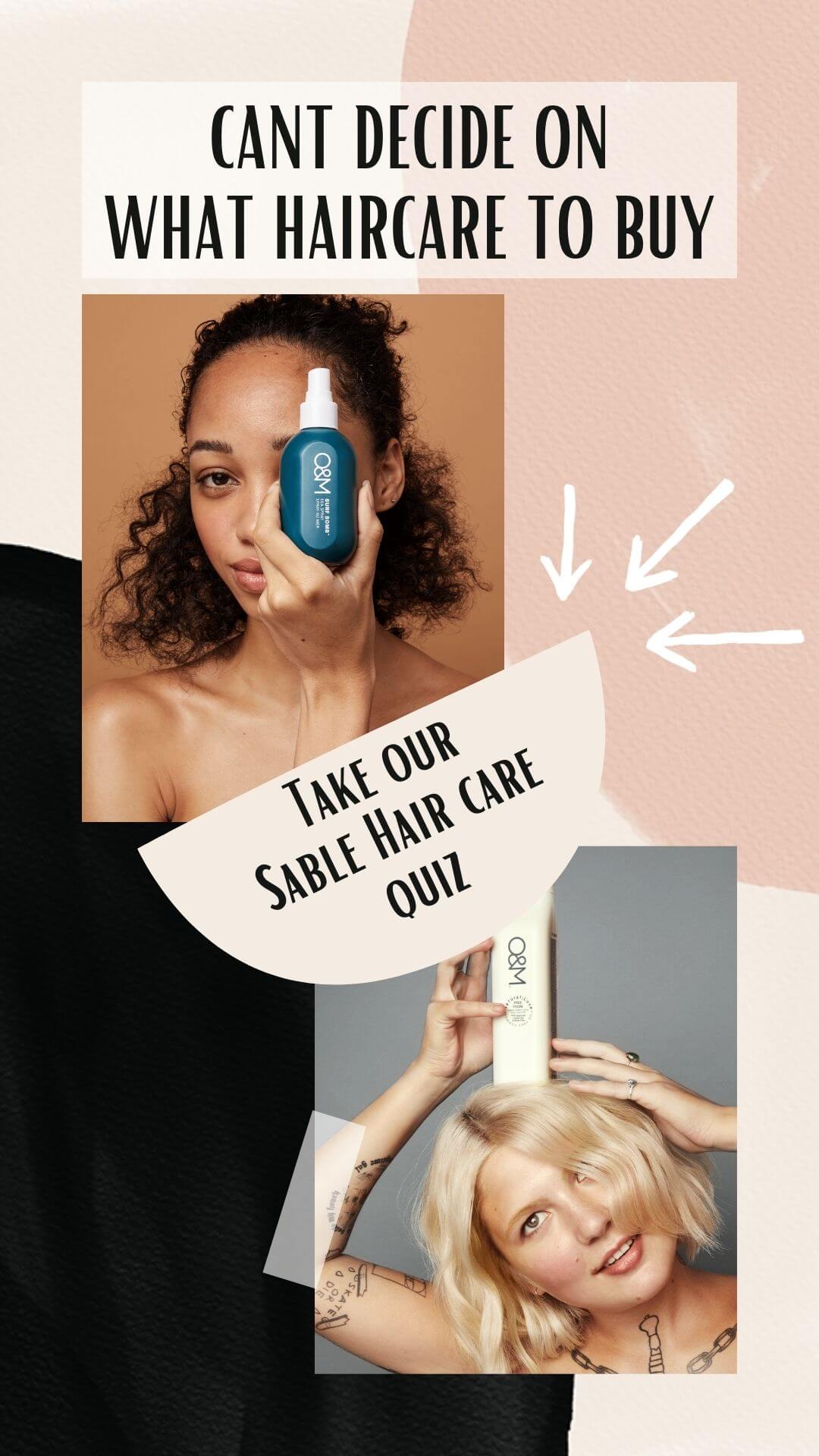
Help! I have an oily scalp and dry ends.
"I have an oily scalp and dry ends" is a question we often get asked. Its seems rather unfair you have to tackle two issues at once. But we are here to help and solve your hair problems.
What Causes Oily Scalp & Dry Hair Ends?
Oily scalp can be caused from a number of issues. Commonly it's from overactive sebaceous glands. Now we need these sebaceous glands as it helps to lubricate and protect the hair and scalp. But what we don't need is one who works over time! There are many reasons that can contribute to this, including genetics, hormonal changes, stress, and certain medications.
Hair hygiene can play its part too. Not washing your hair frequently enough can allow dirt and oil to accumulate on the scalp, leading to an oily appearance. On the flip side washing the hair too frequently can strip the scalp of its natural oils, causing it to produce even more oil to compensate.
Over use of Dry Shampoo can also be another culprit. Dry shampoo works by absorbing excess oil and sweat from the scalp, but if used too frequently, it can actually cause a buildup of product on the scalp, which can lead to clogged hair follicles and increased oil production.
There is also the hair conditions Seborrheic Dermatitis to blame. Anyone with seborrheic dermatitis suffers usually from itchy and inflamed scalp. The scalp will turn pink and scaly and affected areas will produce excessive sebum oil. Extra sebum oil causes dandruff. You tend to find this dandruff doesn't flake off and instead remains on the scalp.
Dry ends is easier to identify. Firstly, and most commonly, take a look at your heat styling. The frequent use of heat styling tools like straightening irons, curling tongs, and blow dryers can also cause dryness in the ends of the hair. The high heat can damage the hair cuticles and cause the ends to become brittle and prone to breakage.
Next biggest one can be blamed on getting your hair coloured. This can weaken the hair and cause the ends to become dry and brittle. Also environmental stressors like sun, wind and humidity play a part.
How To Control An Oily Scalp & Dry Hair Ends?
When you are dealing with an oily scalp and dry hair ends, it's important to start with the right washing regime and products. While I won't be addressing Seborrheic Dermatitis in this chapter, keep reading for some tips on the right regime for you.
Oily Scalp
- Use a bristle brush morning and night. This helps get excess oil from your scalp and help distribute it down the ends. The GHD Oval Dressing Brush is the perfect option. Made from natural bristle not only does it help the oil along the hair shaft it helps add shine and lustre.
- Before you wash use the Davines Rebalancing Treatment. This easy to use treatment goes on dry hair before you shampoo. Its nozzle is helpful in distributing the product easily over the scalp. Massage in for a few minutes, emulsify, massage again then rinse.
- With a large selection of shampoos I will highlight our favourites and let you know why they might be the right one for you.
Davines Rebalancing Shampoo - This shampoo is perfect if your scalp is producing too much oil. It contains natural ingredients that help to regulate sebum production and leave your scalp feeling refreshed.
Davines Detoxifying Shampoo - Perfect for oily scalp from environmental factors.
Davines Solu - If you're overusing styling products and dry shampoo, this shampoo is the perfect solution. It contains gentle surfactants that effectively removes product buildup without stripping your hair of its natural oils.
Oway Purifying Hair Bath - This shampoo is perfect for those with an oily scalp and dandruff. It contains natural ingredients like biodynamic sage and organic Euphrasia that helps to regulate sebum production and sooth the scalp. - Double shampoo. Think of your first shampoo is the breaker of the ice, the second does all the hard work. Leave the second shampoo on for a few minutes, this gives the active ingredients in the shampoo more time to work and penetrate the hair and scalp. This will give the key ingredients more time to work their magic. If you aren't getting the lather you desire after the second shampoo, try adding a little more water and scrub again.
- Flat hand shampoo. Invigorating shampooing will stimulate more oil production. Using a flat hand technique can softly and gently massage the scalp without over stimulating oil glands.
- Rinse thoroughly.
- Shampoo only as needed. Mix it up, you can experiment with different frequencies, shampoo more often or extending the time between washes. Your hair may respond well to this, especially when starting your new regimen, your washing habit my be just that. A habit.
Dry ends
- Start with a pre-wash treatment. Our go to is Epres Bond Repair Treatment. This helps with all hair types and all hair textures. Epres is easily sprayed onto dry hair, meaning its a full free treatment, giving you lasting repair for your colour, thermal and enviromentally damaged hair. Read our full blog about why its so amazing here.
Use this once a week. - Find the perfect conditioner for your hair texture. Now this is the key. Hair repair is for all hair types but people with fine hair tend to avoid conditions designed to repair as they fell it will weigh their hair down. The Vegetarian Miracles are extra moisturising and nourishing. Reinforcing the hair structure and making it easier to comb.
Davines Nourishing Vegetarian Miracle Conditioner - perfect for fine and medium hair types.
Davines Nourishing Vegetarian Miracle Mask - perfect for thick hair. - Towel dry your hair before applying your mask and use your trusty Wet Tangle Teezer to distribute the product.
- Now for the secret, I swear by applying Olaplex #9 in the shower. Squeeze out the excess water but do not towel dry. Use 1-2 pumps of Olaplex #9, comb through then towel dry. This give you on going protection from your blowdryer, styling tools and pollution.
We hope these tips on how to deal with an oily scalp and dry ends will help you achieve a healthier hair and scalp.
Photo by Element5 Digital on Unsplash




